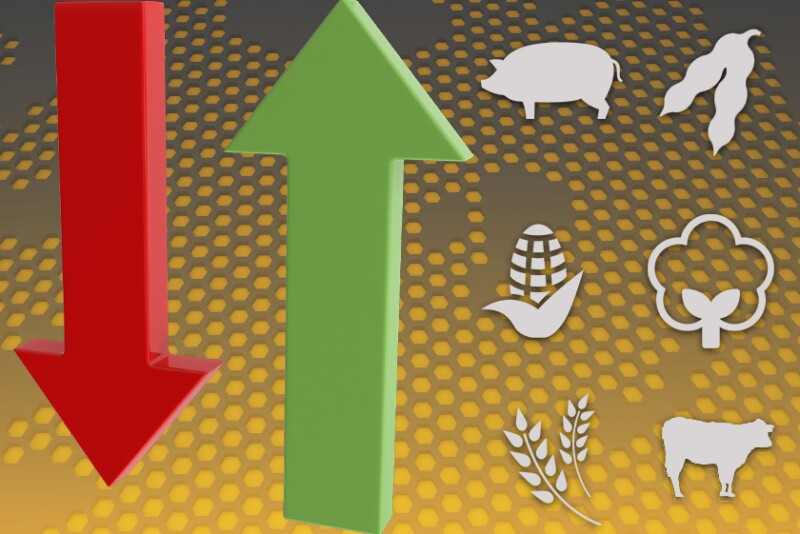GRAIN CALLS
Corn: 1 to 3 cents higher
Soybeans: 5 to 8 cents higher
Wheat: Mixed. Spring wheat 3 to 5 cents higher, winter wheat 3 to 5 cents lower
GENERAL COMMENTS:
USDA raised its “good” to “excellent” rating for the corn crop by one point to 65%, while the “poor” to “very poor” rating dropped a point to 8%. On the weighted Pro Farmer Crop Condition Index (CCI; 0 to 500-point scale, with 500 representing perfect), the corn crop slipped 0.6 point to 366.8 points. The corn CCI rating is 6.3 points below the five-year average for the second week of July.
USDA kept its soybean ratings, with each category unchanged from the previous week. USDA rated 59% of the crop “good” to “excellent” and 11% “poor” to “very poor.” On our weighted CCI, the soybean crop was also virtually unchanged at 351.9 points, though that was 7.8 points below the five-year average for the date.
USDA’s spring wheat crop rating held at 16% “good” to “excellent,” though there was a one-point drop from the top category. And the portion of crop rated “poor” to “very poor” increased five points to 55%. The spring wheat CCI plunged another 9.8 points over the past week to just 243.9 points. Ratings declined in five of the six HRS states, paced by a 4.0-point decline in top producing North Dakota. The CCI rating is now 115.2 points below the five-year average for this date.
Forecasts indicate rain chances in areas of northern Iowa and southern Minnesota today and Wednesday before warmer, drier weather moves back into the Northern Plains and western Corn Belt. Hot, dry conditions are expected to persist across western and northern production areas through next week and into early August. But World Weather Inc. expects “a mix of weather” in August that should provide crops in many aeras with timely rains, similar to the pattern so far in July.
CORN: Futures traded lower for much of the overnight session but firmed late and finished high-range. That gives us some confidence prices will favor the upside at the start of daytime trade. But buyer interest may be limited as crop ratings improved a tick and weather is regarded as generally favorable aside from far northern and western areas of the Corn Belt.
SOYBEANS: Futures firmed late in overnight trade, signaling a higher open is likely this morning. Soyoil futures were sharply higher overnight and will need to lead a push higher as soybeans don’t likely have enough support to do so.
WHEAT: September spring wheat futures pushed to new highs overnight, but buyer interest stalled there. Still, we expect buyer interest to carry through to daytime trade. Winter wheat markets were softer overnight, but seller interest should be limited if spring wheat, corn and soybeans are firmer.
CATTLE: Mixed
HOGS: Mixed
CATTLE: Two-sided trade is expected in the live cattle market this morning as traders start to focus on cash cattle trade for the week. Last week, the average cash price fell $1.76 to $122.16. As a result, traders will likely anticipate more price pressure this week. Showlists this week are higher in Nebraska and Colorado, but lower in Texas and in Kansas. Choice boxed beef prices continued to fall, dropping another $3.59 yesterday, though Select values firmed $1.36 and packers sold 123 loads of product on the day. But it appears packers are still having to discount prices to move beef through the pipeline. Feeder cattle futures will watch the corn market closely for price direction, especially after the firming of corn prices late in the overnight session.
HOGS: July lean hog futures are expected to open under pressure after a sharp drop in the cash hog market on Monday. The average national direct cash price fell $4.12 for the day after trading slightly higher yesterday morning. Deferred futures could see some followthrough buyer interest given their discounts to the cash index. China imported 743,000 MT of meat (it doesn’t specify the category of meat until later in the month) in June, a 17% retreat from year-ago levels. Falling domestic pork prices slowed China’s demand for imports.

